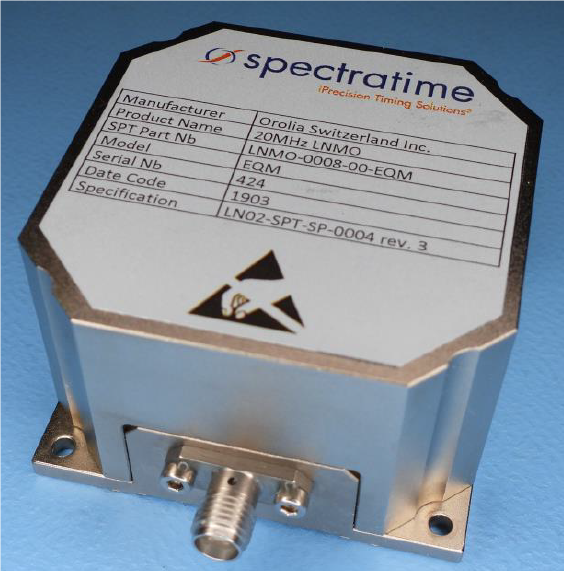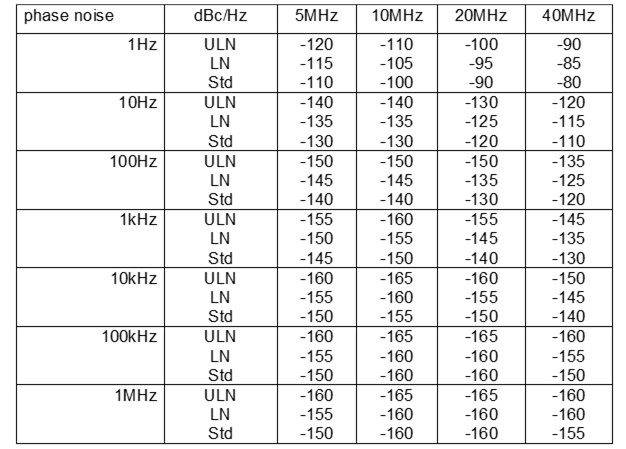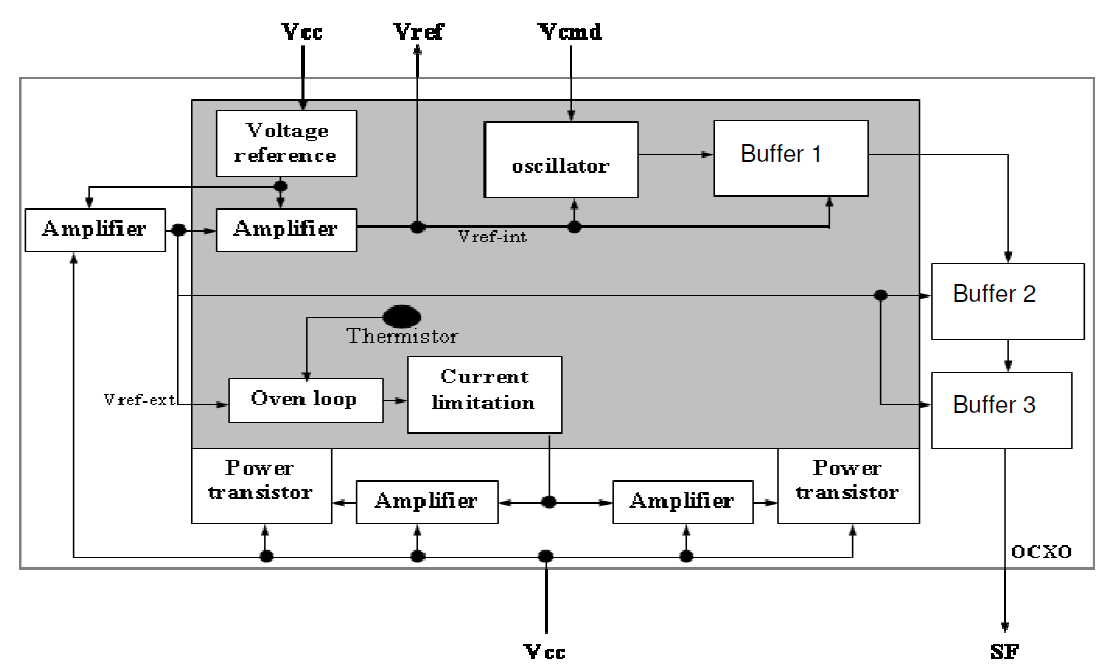
-
StatusCompleted
-
Status date2023-12-19
-
Activity Code5C.281
The objective of these projected 24 months activities is to industrialize, manufacture and qualify the compact, lightweight, low-cost and Low Noise Master Oscillators (LNMO), which has been developed in the frame of an ARTES 5.1 project, contract N°4200023116, by testing 16 Engineering Qualification Models (EQM) at 5MHz, 10MHz, 20MHz and 40MHz. To cover the whole frequency range only one crystal holder has been used (HC37), instead of 3 initially planned (HC40, HC37 and HC35).
These equipments shall be free of ITAR license control for use in worldwide space programs.
The key issues addressed in LNMO project are:
-
Reach phase noise requirements from 1Hz to 100kHz over the whole frequency range (5MHz to 40MHz)
-
Find solutions using ITAR free parts.
-
Validate several crystal suppliers with at least one European.
-
Cost reduction to gain market share
The expected benefits brought by LNMO project are:
-
An available qualified European ITAR free solution
-
An improvement of phase noise behavior, better than current competitors’ solutions (see target in dBc/Hz):

-
Consumption, size and weight reduction
-
A design 100% compliant to the identified customers requirements; none from the identified competitors is compliant at 100%.
Key Features
-
Very small mass and volume
-
Low noise
-
Low temperature sensitivity
-
Fast warm-up
-
Wide operating temperature
-
Pre-adjusted frequency and/or voltage controlled.
-
Frequency Range: 5MHz to 40MHz
-
Supply voltage:12V or 15V
-
Low g sensitivity
Applications
-
Transponder
-
Radar
-
FGU
-
Synthesizer
-
Converters
-
GPS Receiver
-
Navigation
-
OBC
LNMO current design
Size: 50x50x30mm
Weight: 100 - 110 grams (depends on pin configuration)

In the gray area of the block diagram are all the thermal sensitive functions which shall be implanted on the heated board.
Thermo-mechanical structure
The oven will be done by:
-
a small oven used to heat and fix the crystal resonator
-
a ground plane used to heat the PCB and the sensitive parts
-
machining a few slots on the PCB for thermal insulation

The plan is divided in two phases:
Phase 1: Requirements review and design
-
Task 1: Requirements, Technology and Design Modifications Review. Validation of LLI parts list.
PDR
-
Task 2: Detailed LNMO current design improvement:
-
5 MHz and 20MHz (SC overtone 3), 40MHz (SC overtone 5) crystals specifications in HC37 holder
-
Adding option of a second supply voltage.
-
Vs for signal generation supply
-
Vp for oven supply
-
-
-
Task 3: BBM manufacturing at 20MHz and 40MHz
-
Task 4: LLI purchasing and Crystals pre-irradiation
-
Task 5: Update MATV plan including crystal pre-irradiation process
-
Task 6: Establishment of the preliminary qualification test plan
CDR
Phase 2: Qualification
-
Phase 2 A: EQM Manufacture, Assembly, Tuning
-
Task 7: EQM manufacturing
-
Task 8: Finalization and validation of qualification test plan and test procedures
-
TRR
-
Phase 2 B: Qualification tests
-
Task 9: Environmental tests (vibration, thermal and mechanical shocks)
-
Task 10: Irradiation tests
-
Task 11: Thermal vacuum cycle
-
Task 12: EMC tests
-
Task 13: life test
-
Task 14: Overall Assessment and Recommendations
-
FR
Project completed.


